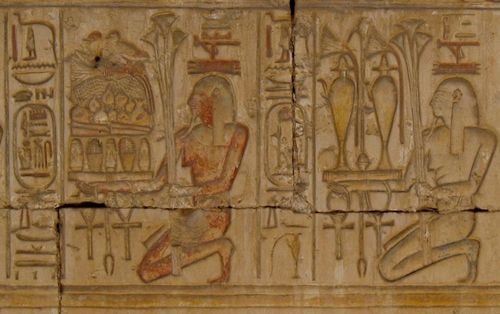Groundbreaking ceremonies of ancient Egyptians
The construction of ancient Egyptian temples began with a groundbreaking ceremony similar to that of modern times.
 |
| Drawing depicting the groundbreaking ceremony of ancient Egyptians. Photo: Ancient origin |
The Egyptian groundbreaking ceremony was called the "foundation ceremony". During the ceremony, they asked the gods to protect the construction work, as well as the completion of the most important structures. The groundbreaking ceremony of a temple consisted of eight rituals, which were directly directed by the Pharaoh, or carried out on his behalf.
The ritual begins with measuring the structure with a small rope and aligning the temple with the stars or a compass. The ceremony is closely associated with Seshat, the goddess of writing and measurements.
Many believe that the ancient Egyptians used a stick with a V-shaped notch to observe the constellation of the Great Bear, helping them calculate the exact position of North and the direction of construction.
The next ritual part was the “hoeing of the earth,” which was similar to a modern-day groundbreaking ceremony. The pharaoh (or priest acting on his behalf) dug the first trench of the temple with a wooden hoe, symbolizing cutting through the Earth to the upper limit of Nun, the primordial water god. The pharaoh then used a wooden mold to cast a mud brick and placed it in the foundation, representing the first bricks used in the building.
The pharaoh poured a thin layer of sand from the Nile River bank into the trenches in the foundation. The builders filled the rest with sand from the Nile, making the foundation smoother. The pharaoh used a wooden lever to push a large block of stone into one corner of the temple, signaling the start of construction. When the temple was completed, it was purified before it could be used.
The final part is the ceremony of consecrating the temple to the god. The pharaoh stands before the image of the god sitting in the temple, worships and prays. Many animals are sacrificed.
Modern archaeologists have also discovered money, ceramic plates, bowls, and offerings (made of porcelain, limestone, and wood) buried in important places around ancient Egyptian construction sites.
According to VnExpress






